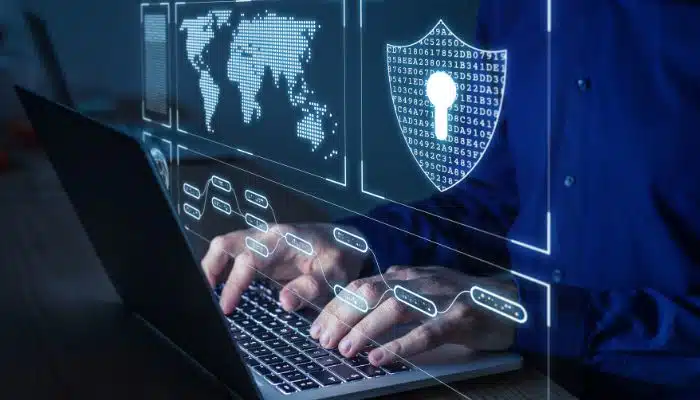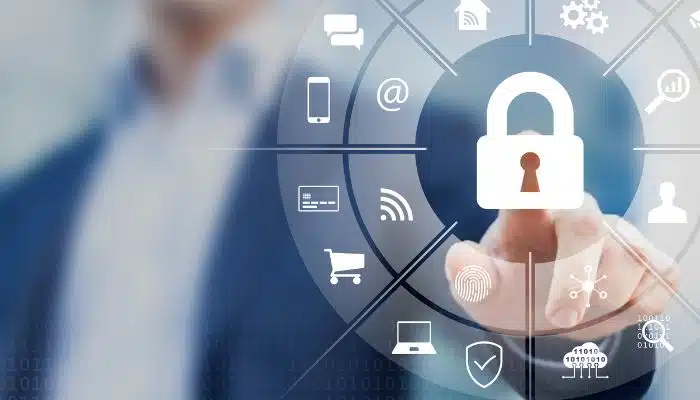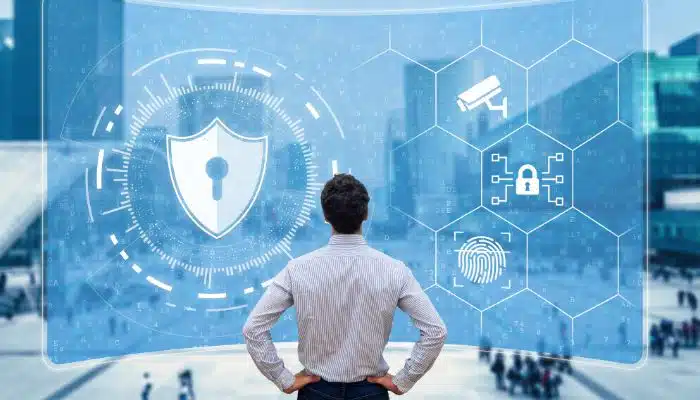Cybersecurity has become an essential pillar in today’s digital age, where technology and connectivity are ubiquitous. In a world where personal data, sensitive information and digital infrastructure are at constant risk, understanding and applying sound cybersecurity principles becomes critical.
That is why in this article we explain the importance of cybersecurity and the best practices to protect our online presence. Read to the end and learn how to enter this safer and more secure digital environment.

Cybersecurity is a crucial field in the digital age that focuses on protecting computer systems, networks and data against cyber threats.
It consists of the implementation of measures and strategies to prevent, detect and respond to malicious attacks that seek to compromise the confidentiality, integrity and availability of information.
In an environment where technology plays a central role in our lives, cybersecurity becomes an essential shield to save both personal data and critical infrastructure against various risks such as malware, ransomware, phishing attacks and other digital vulnerabilities.
Cybersecurity acts as a protective shield against a wide variety of cyber attacks. Some of the types of attacks they address include:
Cybersecurity is continually adapting to meet the changing tactics of cybercriminals and protect against new and emerging threats. If you want to know more about it, visit the article on cyberattacks, which we have published in our blog.
APT (Advanced Persistent Threat): In cybersecurity, APT refers to Advanced Persistent Threats. These are sustained and targeted cyber-attack campaigns, generally carried out by a group of people who have been
APTs differ from conventional cyber attacks due to their persistence and sophistication. These attacks are often deployed stealthily and continuously, seeking to access and compromise specific systems over an extended period of time.
APT actors use advanced techniques such as custom malware, spear phishing and exploitation of specific vulnerabilities to achieve their goals.
In the field of cybersecurity, CERT (Computer Emergency Response Team) and CSIRT (Computer Security Incident Response Team) are specialized entities that play a crucial role.
The CERT focuses on coordination and response to computer emergencies, while the CSIRT focuses on security incident management. Both teams aim to identify, contain and mitigate cyber threats to protect the integrity and security of systems and data.
Their work contributes to strengthening the resilience of organizations in the face of constantly evolving digital attacks.

The importance of cybersecurity today lies in the ubiquity of digital technologies and the interconnection of devices. We live in a digital age where information is at the core of all operations, from business transactions to personal data.
Given the complexity of cyber threats, investment in cybersecurity is presented as a proactive and necessary measure to safeguard the integrity of systems, data and society as a whole.

In a digital world constantly threatened by cyber-attacks, the adoption of preventive and proactive measures becomes essential. Here are some key strategies to address cybersecurity challenges:
Keeping firewalls and antivirus programs up to date is the first line of defense. These tools detect and block known and unknown threats.
Ongoing staff training in safe online practices is crucial. Raising awareness of social engineering and potential risks minimizes the possibility of falling into digital traps.
Keeping all software and operating systems up to date is key. Updates often address known vulnerabilities that could be exploited by cybercriminals.
Regular backups of critical data ensure that, in the event of an attack, vital information can be restored without significant loss.
Restricting users’ access to critical information according to their roles helps mitigate the risk of unauthorized access.
Adding an additional layer of security through A2F strengthens the protection of accounts and systems, as two forms of verification are required.
Establish constant monitoring systems to detect unusual activities or suspicious patterns in real time.
Having a clear and practical plan for incident response ensures rapid and coordinated action in the event of a cyber-attack.
Participating in cybersecurity communities and sharing threat information helps prevent similar attacks and strengthen global security.
Performing regular security audits and assessments allows you to identify and correct potential vulnerabilities before they are exploited.
By adopting these measures comprehensively, organizations can significantly strengthen their cyber defenses and minimize the impact of potential cyber-attacks. Cybersecurity is a shared responsibility that requires constant vigilance and adaptation to changing digital threats.
Looking to strengthen your company’s cybersecurity? At Kiwop, marketing and web development agency, we are committed to provide you with effective solutions. Contact us to protect your digital environment and keep your assets safe!
If you want to have the website you want or increase the online visibility of your brand, we know how to do it.
Shall we start today?
Leave a Reply